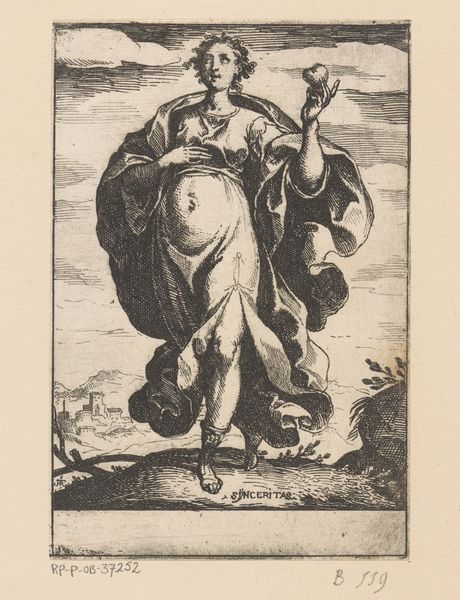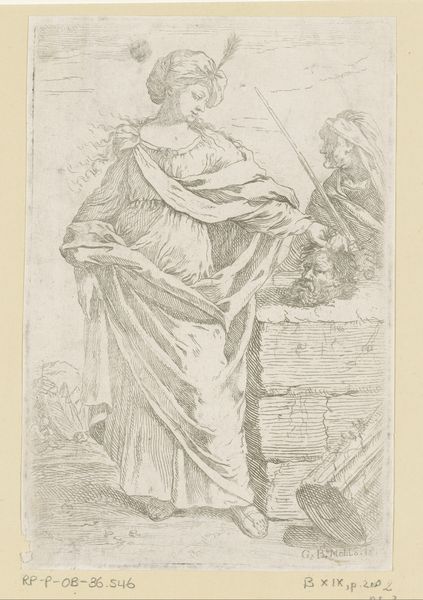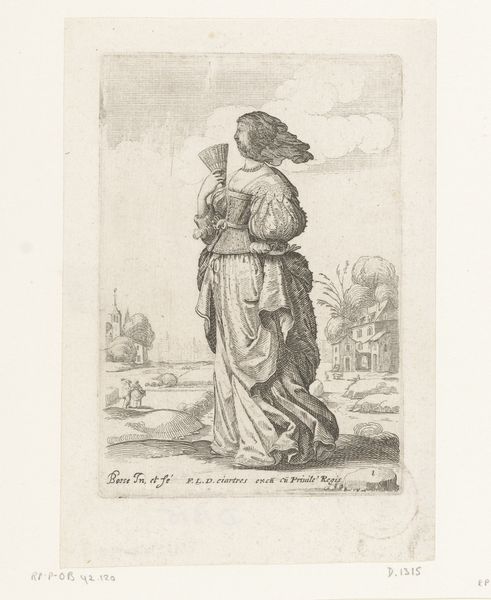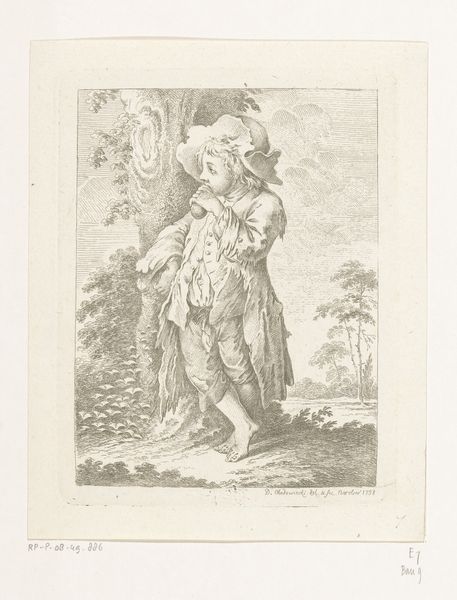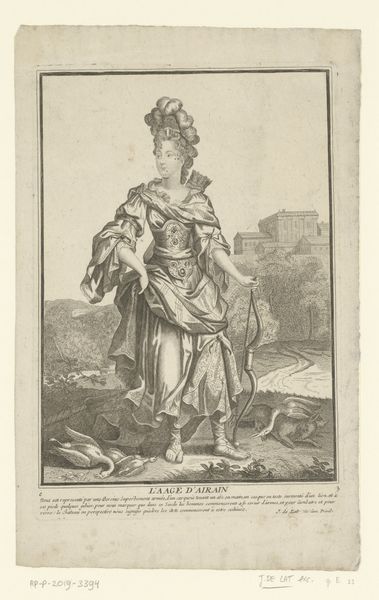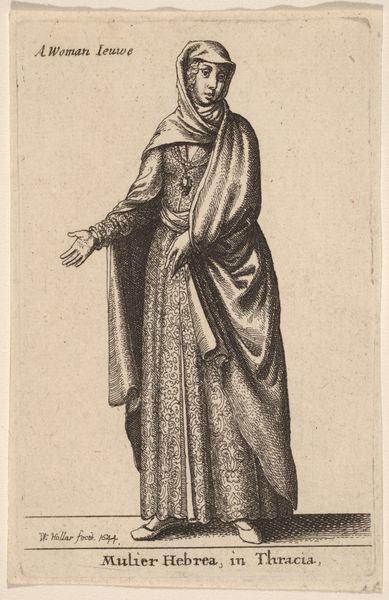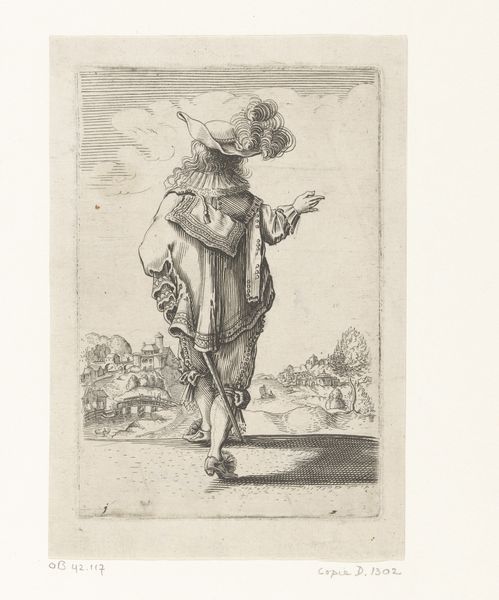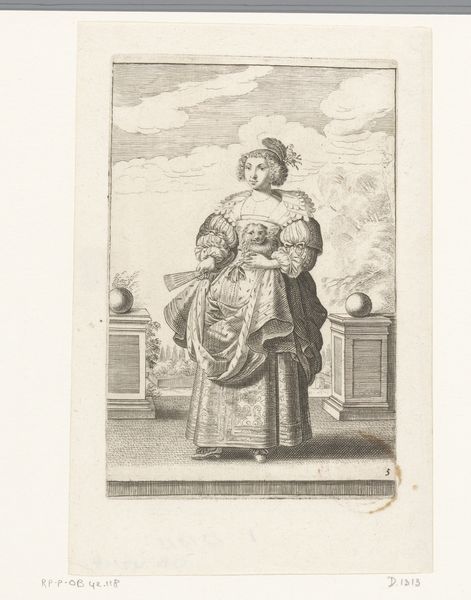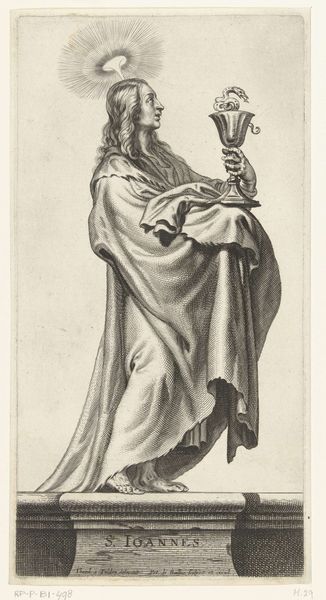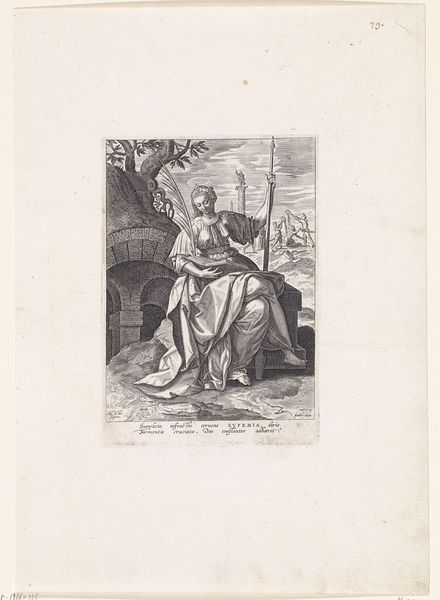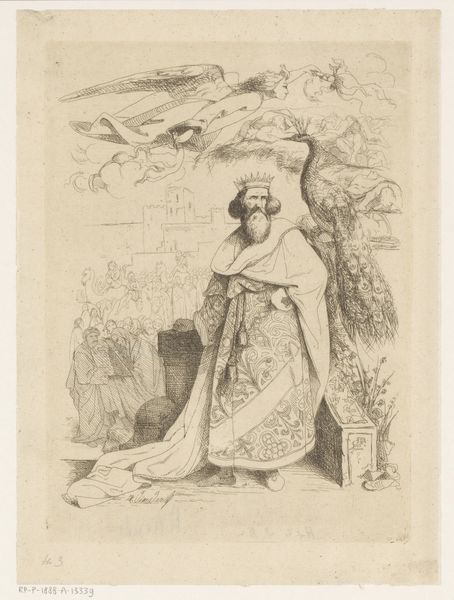
Franse edelvrouw, op de rug gezien, gekleed volgens de mode van ca. 1630 1629
0:00
0:00
abrahambosse
Rijksmuseum
engraving
#
portrait
#
baroque
#
line
#
engraving
Dimensions: height 144 mm, width 93 mm
Copyright: Rijks Museum: Open Domain
Curator: This engraving, dating to 1629, is titled "Franse edelvrouw, op de rug gezien, gekleed volgens de mode van ca. 1630," or "French noblewoman, seen from the back, dressed according to the fashion of about 1630." Abraham Bosse is the artist credited with its creation. Editor: It’s striking how Bosse prioritizes the elaborate detail of the gown over the subject's face, which we only see in profile. The dress absolutely dominates the composition, giving us a powerful impression of status. Curator: Yes, the linearity and meticulous detail used in the rendering of the dress's texture and form invite the viewer to examine its very construction. Semiotics tells us that this dress is much more than covering; it signifies the sitter’s social position. Editor: And what position it represents! During this era, sumptuary laws dictated who could wear what, reinforcing the hierarchy of power. So the opulence of this garment tells a clear story about privilege. This wasn't merely fashion; it was a visual declaration of societal standing. Curator: Absolutely, note the attention given to the pattern, and the cut of the sleeves. There is even subtle interplay of light and shadow that further articulate these puffy elements, animating their baroque flamboyance within this printed form. Editor: One might even consider this piece within the discourse around gender and representation. By focusing on her attire and turning the woman’s back to us, is Bosse making a comment on the objectification inherent in societal expectations placed on women during the period? It suggests she is on display. Curator: That reading resonates, although perhaps it's more simply that the back view highlights the craftsmanship, the textile and the details that distinguish elite fashion in early modern Europe. Editor: Precisely. Seeing the work now makes one reflect upon our contemporary fashion systems and its links to power and identity, as the dynamics around visual culture remain at play today. Curator: Indeed, after observing the compositional aspects and use of line, my eyes return to consider the cultural impact this image had, and its relationship to status. Editor: The way we decode symbols and social codes embedded in attire remains fascinating and relevant.
Comments
No comments
Be the first to comment and join the conversation on the ultimate creative platform.
